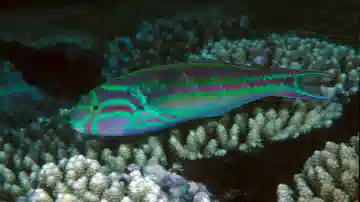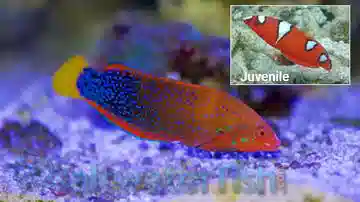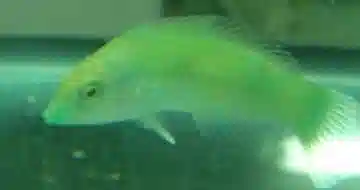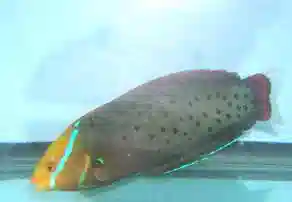Formosa Wrasse
Coris formosa
(0 Reviews)
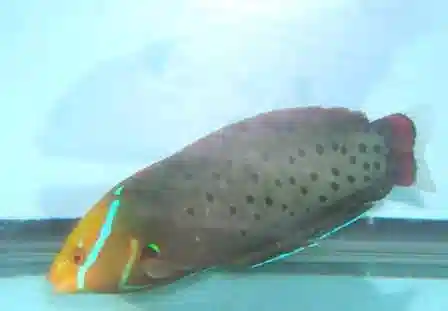
Formosa Wrasse
Coris formosa
(0 Reviews)
{{ item.name }}
Size: {{ item.extra_field_3 }}
${{ getFormattedPrice(item.saleprice) }} ${{ getFormattedPrice(item.price) }}
To join the waiting list, click here
Free Shipping
With
$199.00
or more in Marine Life.
More details...
Formosa Wrasse Care Facts
| Care Level: | Moderate |
|---|---|
| Temperament: | Peaceful |
| Diet: | Carnivore |
| Reef Safe: | No |
| Minimum Tank Size: | 125 Gallons |
| Max Size: | 20 inches |
Formosa Wrasse (Coris formosa): A Comprehensive Guide for Saltwater Marine Aquariums
The Formosa Wrasse (Coris formosa) is a captivating species that can be a prized addition to your saltwater marine aquarium. This factual guide provides essential information on the care, characteristics, and compatibility of the Formosa Wrasse within your aquarium setup.
Habitat and Adaptability of the Formosa Wrasse
The Formosa Wrasse is commonly found in the Indo-Pacific region, inhabiting coral-rich areas, rocky reefs, and lagoon environments with moderate water movement.
Reef Safe and Compatibility of the Formosa Wrasse
Formosa Wrasses are generally not considered reef-safe. They may exhibit a penchant for nipping at corals, small invertebrates, and certain crustaceans.
Size and Lifespan of the Formosa Wrasse
These wrasses are relatively large, reaching 10 to 12 inches (25 to 30 cm). With proper care, Formosa Wrasses can live for 5 to 10 years, providing a long-lasting and engaging presence in your marine aquarium.
Diet in Captivity for the Formosa Wrasse
Formosa Wrasses are carnivorous and require a varied diet. Please provide them with a diet that includes high-quality marine flakes, pellets, frozen foods like mysis shrimp and brine shrimp, and occasional live foods to maintain their health and vibrancy.
Aquaculture Availability of the Formosa Wrasse
Aquacultured Formosa Wrasses are not available to hobbyists. They are typically sourced from the wild. Look for a responsible supplier utilizing sustainable collection methods.
Sexual Dimorphism of the Formosa Wrasse
Formosa Wrasses exhibit sexual dimorphism. Males often display more vibrant and colorful markings than females, especially during breeding displays.
Symbiotic Relationships of the Formosa Wrasse
Formosa Wrasses do not typically form symbiotic relationships with anemones or corals. They are more solitary and prefer to forage among the rocks and sand.
Compatibility with Other Fish of the Formosa Wrasse
Formosa Wrasses are known for their semi-aggressive temperament. Care should be taken when introducing them to other tank mates, especially those with similar characteristics.
Temperament and Behavior of the Formosa Wrasse
These wrasses are active swimmers, adding movement and vibrancy to the aquarium. However, they can become territorial and aggressive towards other fish.
Suitable Tank Mates for the Formosa Wrasse
Consider compatible tank mates such as Yellow Tang (Zebrasoma flavescens), Blue-Green Chromis (Chromis viridis), Kole Tang (Ctenochaetus strigosus), Six-Line Wrasse (Pseudocheilinus hexataenia), and Banggai Cardinalfish (Pterapogon kauderni).
Tank Requirements for the Formosa Wrasse
A tank with a capacity of 125 gallons or more is recommended for housing Formosa Wrasses due to their size and activity level. Provide ample live rock with hiding spots and crevices to mimic their natural habitat and offer exploration opportunities.
Water Conditions for the Formosa Wrasse
Maintain the pH level between 8.1 and 8.4. Keep the salinity within the range of 1.023 to 1.025. The recommended temperature range is 75°F to 82°F (24°C to 28°C). Moderate water flow is suitable to replicate their native environment.
Other Common Names of the Formosa Wrasse
The Formosa Wrasse may also be known as the Formosan Coris Wrasse and the Queen Coris Wrasse.
Why Choose Formosa Wrasses from Saltwaterfish.com
Selecting Formosa Wrasses from Saltwaterfish.com offers marine enthusiasts the opportunity to introduce a visually captivating and semi-aggressive species to their saltwater marine aquarium. Our commitment to providing healthy and well-acclimated specimens ensures you receive robust and vibrant fish for your aquatic environment. With our extensive experience and dedication to marine life, Saltwaterfish.com is a dependable source for enthusiasts seeking quality marine species.
The Formosa Wrasse's striking appearance and engaging behavior make it an attractive addition to your saltwater marine aquarium. By adhering to their specific care requirements and considering their semi-aggressive temperament, you can enjoy the dynamic presence this captivating marine inhabitant brings to your tank.
Currently Formosa Wrasse does not have any reviews.


